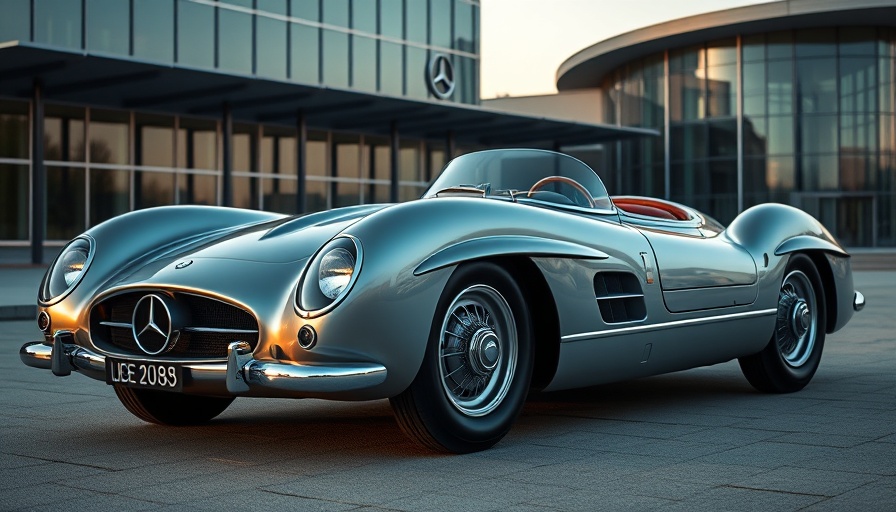
The Remarkable Sale of the W196 Stromlinienwagen
A historic race car created by Mercedes-Benz recently made headlines by fetching a staggering 51.2 million euros ($52.7 million) at auction, securing its position as the second-most expensive car ever sold. This incredible sale took place at the Mercedes-Benz Museum in Stuttgart, organized by RM Sotheby's. The car, known as the W196 Stromlinienwagen chassis no. 00009/54, is not just a collector's item but an emblem of automotive excellence and racing history.
Significance of the W196 in Racing History
The W196 Stromlinienwagen was a significant player in the world of racing during the 1950s. It made its debut at the French Grand Prix in 1954, where it achieved remarkable success. With the legendary Juan Manuel Fangio at the wheel, it showcased Mercedes-Benz's dominance in speed and engineering. In total, there were only a limited number of these magnesium streamliner bodies, carefully crafted for high-speed tracks. The car’s unique design received accolades from enthusiasts and collectors alike, underlining its rarity.
A Peek into Its Racing Career
The racing history of the W196 is as captivating as its auction price. After debuting at a non-Formula 1 event in Argentina in January 1955, it showcased the prowess of Mercedes's engineering capabilities. Sir Stirling Moss later took the reins of the car at the Italian Grand Prix but was forced to retire due to a mechanical issue, albeit after setting the fastest lap of the race at an impressive speed of 134 miles per hour. This confluence of speed and engineering made the car a symbol of Mercedes's rich heritage.
Modern Context: Comparative Values
Before this recent auction, the title of the most expensive car ever sold belonged to another Mercedes vehicle—the 300 SLR Uhlenhaut Coupe, which sold for a whopping $143 million in 2022. This context not only emphasizes the value of the W196 but also underscores the longstanding legacy of Mercedes-Benz in the luxury car market. With two of the top three auction sales being Mercedes, it’s clear that the brand not only represents quality but also significant investment potential.
Implications for Collectors and Dealerships
The record-breaking sale of the W196 highlights a fascinating trend among high-end car collectors. For dealership principals and general managers, understanding the dynamics of collectible vehicles can lead to better negotiation strategies and sourcing opportunities. It shows that rarity and historical significance can greatly influence a car's value—insights that are crucial for any player in the automotive market. This aligns with ongoing trends in used car sales, where unique features and heritage can drive consumer interest and purchasing decisions.
Conclusion: Understanding the Value of Automotive Heritage
The recent auction emphasizes not only the value of racing history but also what collectors and buyers can gain from understanding the significance of classic models like the W196 Stromlinienwagen. There is an increasing appreciation for automotive heritage, and this appreciation translates into investment potential for collectors and dealerships alike.
 Add Row
Add Row  Add
Add 




Write A Comment